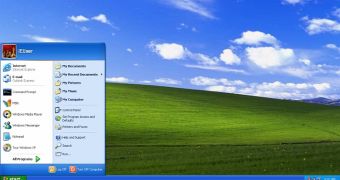No less than 95 percent of the world’s ATMs are still running Windows XP right now, so banks and ATM operators need to move quickly to upgrade all cash machines before end of support for this particular OS version comes on April 8.
A number of financial institutions have already started the migration process to a newer OS version, while others are discussing with Microsoft the possibility to purchase extended support, but a few banks are also considering a third option that would see them moving from Windows XP to Linux.
Speaking for Computerworld, David Tente, executive director, USA, of the ATM Industry Association (ATMIA), said that some ATMs could be moved to Linux in order to obtain better control over the device itself and synchronize hardware and software upgrade cycles without being forced by Microsoft to do it at a defined time.
“There is some heartburn in the industry,” Tente was quoted as saying by the same source when asked to comment on Microsoft’s decision to discontinue Windows XP. “Some are looking at the possibility of using a non-Microsoft operating system to synch up their hardware and software upgrades,” he continued.
Approximately 60 percent of the ATMs in the United States won’t be moved to a newer operating system before April 8, which means that some banks could either purchase extended support from Microsoft or work to upgrade them in the coming months.
The same is happening on the desktop computer market as well, with plenty of users still running Windows XP despite all of Microsoft’s recommendations to start the deployment of a newer operating system before April 8.
At this point, third-party statistics are claiming that 29 percent of the desktop computers worldwide are still running Windows XP, so it’s pretty obvious that not everyone will move to Windows 7 or Windows 8 before the April deadline.
But seeing more consumers moving to Linux is clearly a thing that needs to be avoided for Microsoft, as the software giant hopes to experience a mass transition to Windows 8.1, its new modern platform that was officially introduced in October 2013.
Moving to Windows 8.1, on the other hand, would also require hardware upgrades, so consumers are usually avoiding this particular operating system version because of the increased costs. Going for Linux could indeed be a much more affordable solution, but customers still need to deal with additional training, app migration, and technical support issues that might be more difficult to address than on a Windows device.

 14 DAY TRIAL //
14 DAY TRIAL //